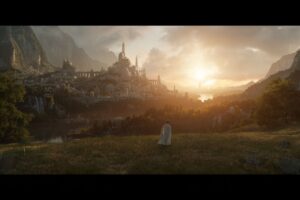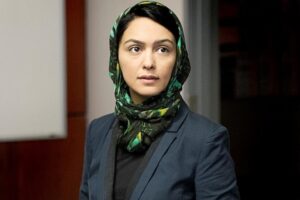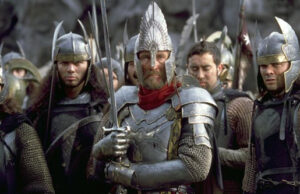If nothing else, Amazon’s The Lord Of The Rings has already done a great deal to expose the power and influence that Peter Jackson still wields, not so much over Tolkien fandom as a whole – although his mark is certainly felt there, and his The Lord Of The Rings trilogy is understandably an entry point for many fans – but over the general public’s view of the franchise. Imagery that originated in his trilogy has become indelibly associated with the story over the past twenty years, and some hardcore fans of his films display the kind of surprisingly strong and aggressive loyalty to Jackson that makes any attempt to supplant that iconic imagery…difficult, to say the least.
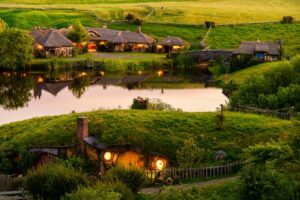
Now, Jackson’s films are each cinematic masterpieces in their own right (I am of course deliberately ignoring The Hobbit trilogy), so it’s not totally surprising that they’ve still got legions of diehard supporters. I myself am a massive fan, and if you don’t believe I’ve got a few “10 out of 10” movie reviews for the trilogy on my blog that should dispel any doubt. They are my favorite movies. But that doesn’t make them perfect, and I’ve always been open to the idea of seeing something new and unique from Amazon’s The Lord Of The Rings – especially since their show isn’t a remake of Jackson’s trilogy, something that a lot of people still don’t know and which complicates the discourse around it exponentially.
But one of many things that Jackson got right was his use of nature in the trilogy as more than just a setting, but as a main character in the story.
A deep-seated respect and admiration for nature is integral to all of J.R.R. Tolkien’s writings, and therefore to any adaptation of said writings. And by choosing to shoot almost the entirety of The Lord Of The Rings in his home country of New Zealand, Peter Jackson imbued the films with a love of nature that was not only important to the story on a thematic level, but important to him on a personal level. He utilized stunningly beautiful landscapes around the North and South Island that at that time were mostly brand new to global audiences, thereby ensuring that, for many people, Middle-earth and The Lord Of The Rings are the only exposure they have to New Zealand.
And over the past two decades, New Zealand has slowly taken on the very identity of Middle-earth, to the detriment of its own Māori culture and history, and to a point where there’s legitimate cause for concern over how much the country relies on its tourism industry, which in turn relies on The Lord Of The Rings and other big movie franchises, which in turn leads to things like the infamous “Hobbit Law” – passed in 2010 as a little incentive for Warner Brothers to make its Hobbit trilogy in New Zealand – that prevents workers in New Zealand’s film industry from unionizing. The Hobbit Law has been subtly revised several times, but not repealed, and the dispute it caused even led to a feud between Jackson and The Lord Of The Rings actress Robyn Malcolm.
But while that’s the kind of thing you might think would entice Amazon to stick around (and that’s the very reason for the Law’s conception), neither the reprehensible Hobbit Law nor New Zealand’s location incentive program (which, if I’m reading the reports accurately, would have made Amazon eligible for an “uplift” of roughly $23.1 million dollars, if not more down the line), could ultimately keep the studio in the country. Amazon announced last night that the second season of The Lord Of The Rings will move production to the United Kingdom, marking the first time in the franchise’s history that it will be filmed entirely in the nation of its origin.
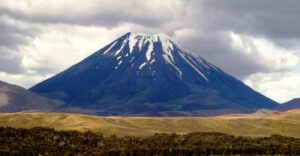
The reaction has been divided, nowhere more so than in New Zealand itself, where Amazon’s decision will have far-ranging economic and political effects. It doesn’t help that Amazon gave very little indication of why they made the move, although it’s worth noting that many of their upcoming series’ are being produced in the UK anyway, so it may just be a matter of practicality – especially since The Lord Of The Rings is also hiring quite a lot of British actors who had been stuck in New Zealand for several months during the country’s lockdown. With the nation only just signaling its intentions to reopen its borders beginning early next year, it may be simpler for Amazon to work in a slightly less restrictive nation for the time being…although filming in New Zealand certainly came with the benefit of not having to shut down production because of COVID-19 cases every thirty minutes, which is not a guarantee in the UK.
Another benefit that came with New Zealand were its stunning landscapes and vistas, which have become visually synonymous with the fantastical realms of Middle-earth: from the hilly patch of farmland in Matamata that quite literally is the village of Hobbiton, to the slopes of Mount Ngauruhoe where the Mount Doom sequences were filmed, to the forests around Paradise that served as home to the Elves of Lórien. As has often been noted, the diversity of environments in New Zealand gave Peter Jackson’s films the look and feel of being a globe-trotting adventure, but the fact that so many of his iconic filming locations are accessible in a single vacation made them excellent for tourists trying to escape into their favorite fantasy world.
The UK may not be blessed with nearly as many mountain ranges as New Zealand, but it still boasts a number of beautiful forests, coastlines, and craggy landscapes – particularly in Scotland where, what do you know, Amazon’s The Lord Of The Rings was originally going to be filmed. As long as they continue to film on location in the UK, rather than assembling their landscapes in post-production using CGI to replicate the real deal, I don’t necessarily see an issue with this change. Maintaining visual continuity with season one is gonna be a hassle, but at this point Amazon has been filming for so long in New Zealand that they may be able to stitch reused footage into English or Scottish countrysides seamlessly. Maybe that’s what that fake production crew was actually doing this whole time…
I think one reason this decision has been met with such backlash is because it seems to confirm what’s becoming increasingly clear – that Amazon intends to cut ties with Jackson’s continuity, perhaps for good. I mean, we don’t know that for sure. They may end up returning to New Zealand for some reason. But this definitely suggests that Amazon’s The Lord Of The Rings is going to establish its own visual style and aesthetic moving forward, and I can understand why that would make some fans upset. I know I’ll be extremely angry if the rich and unique landscapes of New Zealand are swapped out for lifeless greenscreens. We saw what that looked like in The Hobbit, and it was a travesty.
But hey! Maybe we’ll see some of the locations that inspired Tolkien himself in The Lord Of The Rings. That would be pretty darn awesome, and feels like too good an opportunity for Amazon to miss. I’m gonna miss New Zealand, I’ll be honest, but I’m hoping that, in this case, change doesn’t necessarily mean a change for the worse. We’ll have to wait and see.
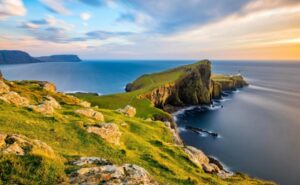
If you live in New Zealand, I’d be especially interested to learn more about how this move affects the country, and if you live in the UK, I’d love to hear what locations you think would make great settings for The Lord Of The Rings! Share your own thoughts, theories, and opinions, in the comments below!



